Abstract
Fiberoptically guided tracheal intubation represents one of the most important advances in airway management to occur in the past thirty years. Perhaps its most important role is in management of the anticipated difficult airway. This is a situation in which the dangers of encountering the life-threatening "can't intubate, can't ventilate" situation can be avoided by placement of an endotracheal tube while the patient is awake. Although skill at the procedure of endoscopy is obviously necessary in this setting, these authors hold that success or failure of the technique frequently depends on the adequacy of preparation. These measures include 1) pre-operative assessment of the patient; 2) careful explanation of what lies in store; 3) "setting the stage"; 4) preparing the equipment to be used; and 5) preparing the patient (antisialogue, sedation, application of topical anesthesia to the upper airway). If these preparatory measures are carried out meticulously, the likelihood of performing a successful and comfortable awake fiberoptic tracheal intubation is greatly increased.
Full text
PDF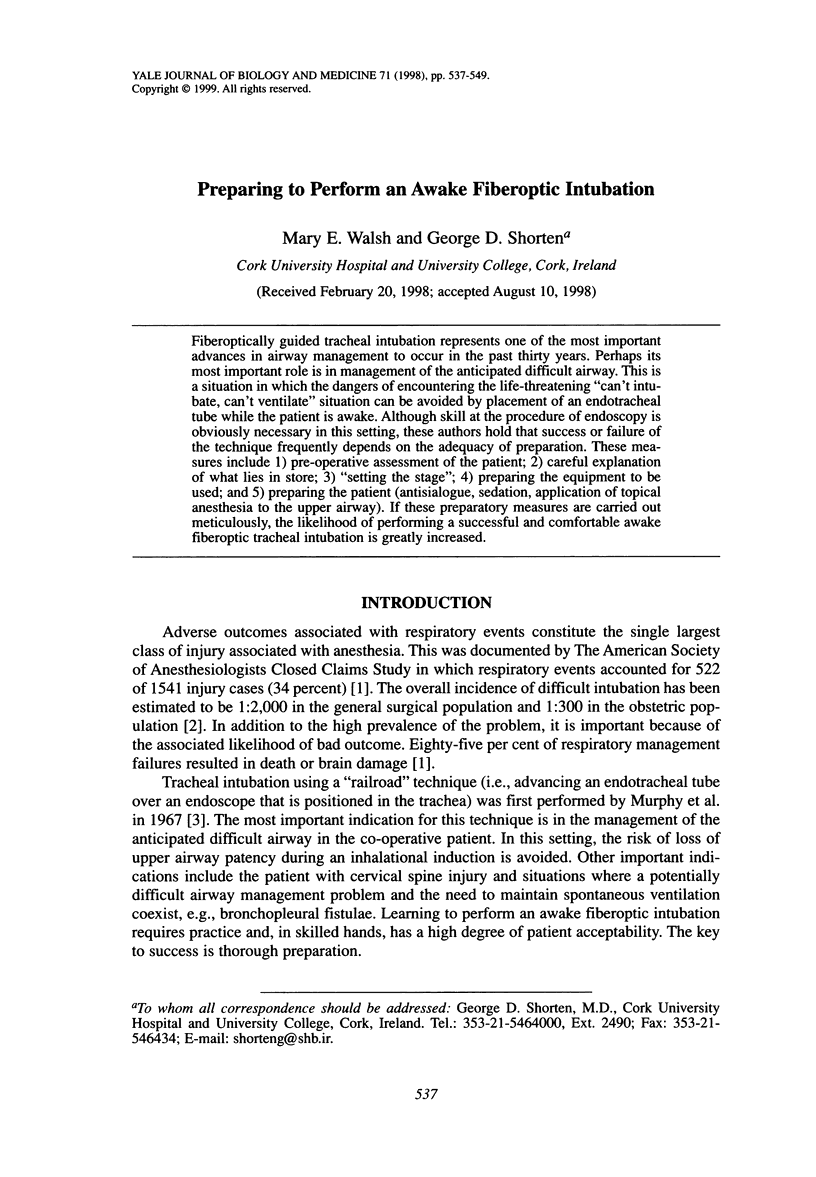
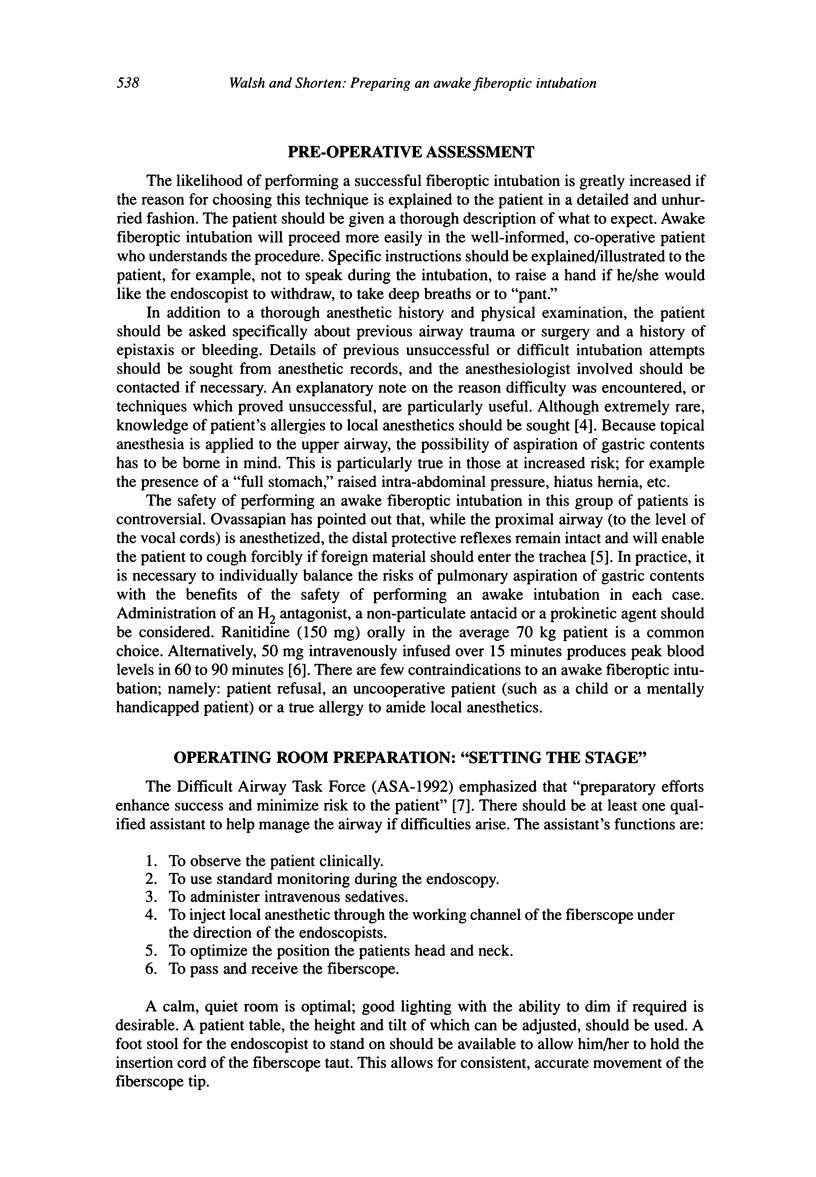
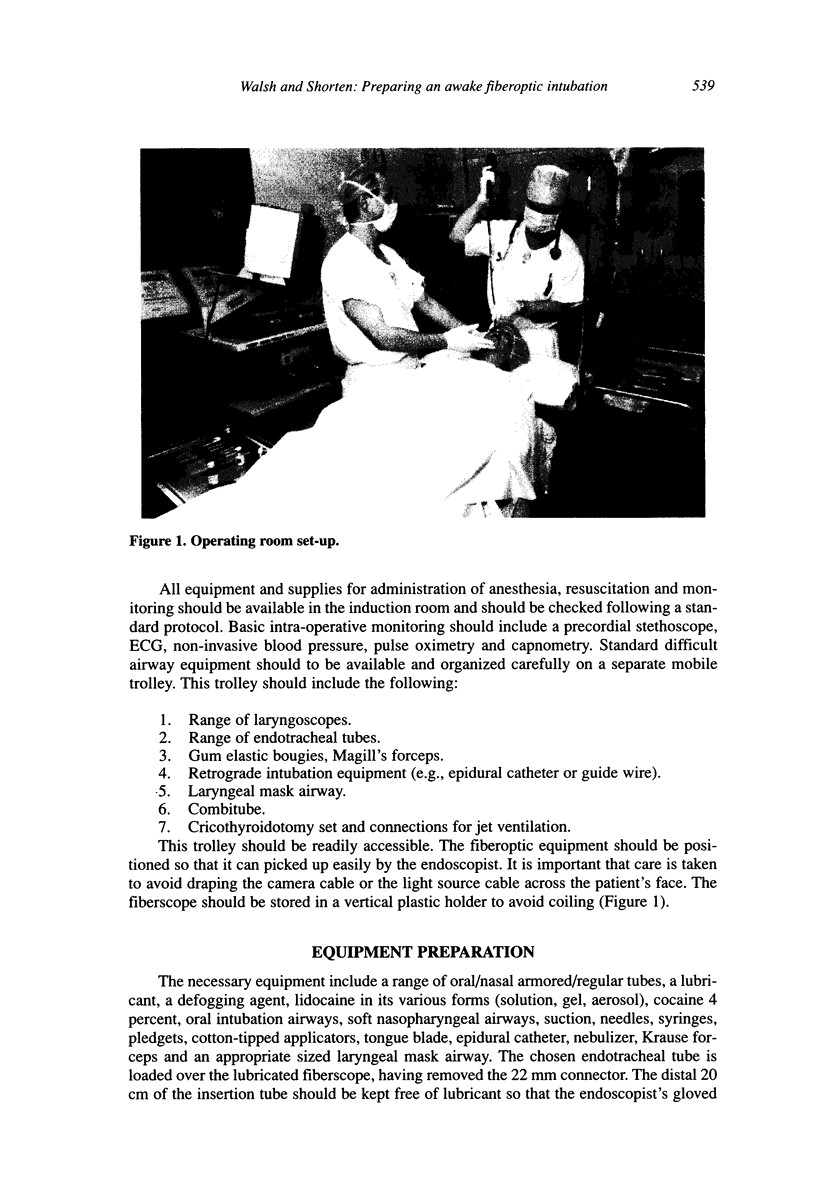
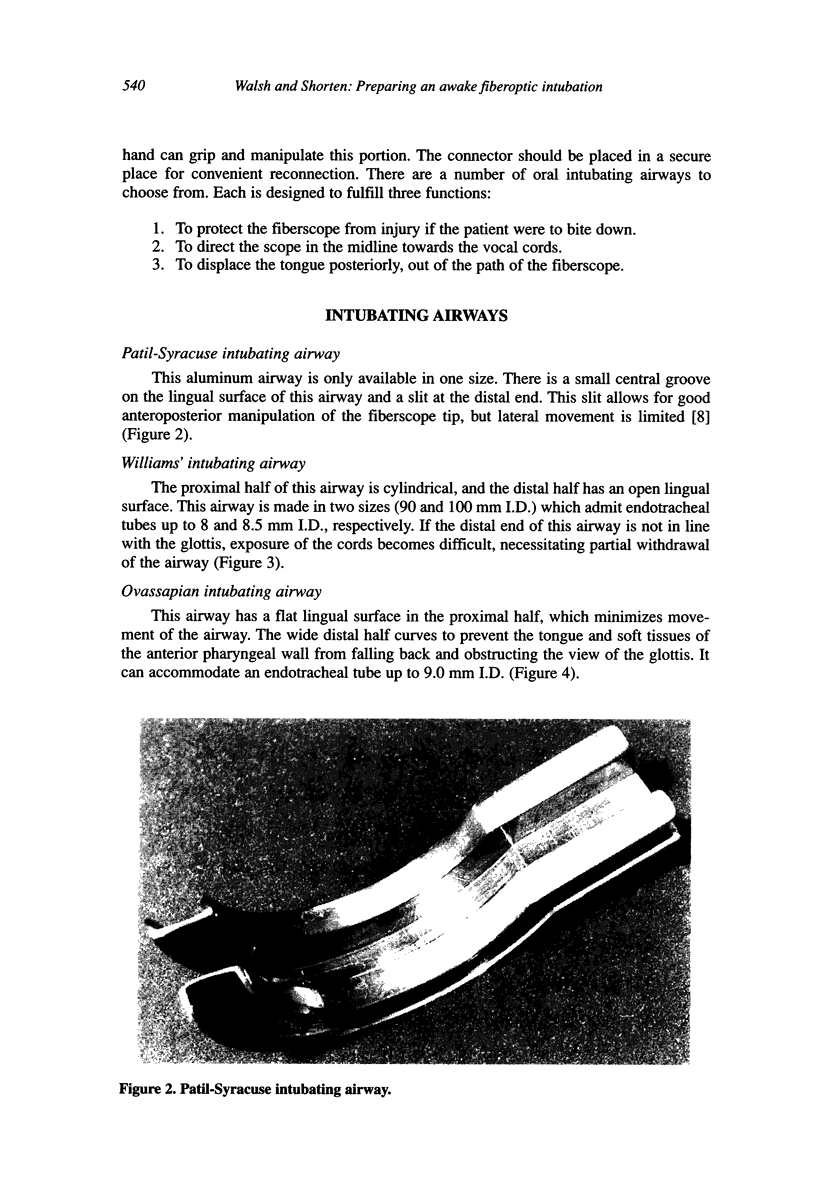
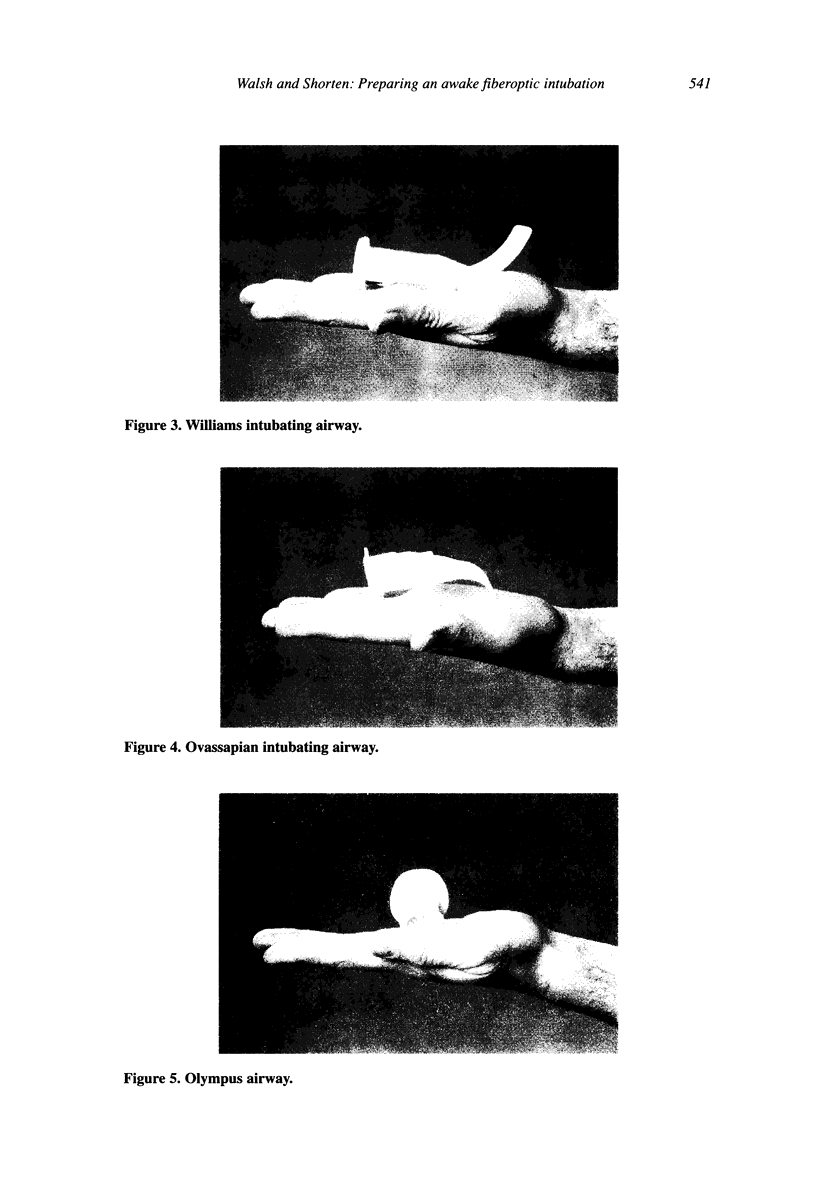
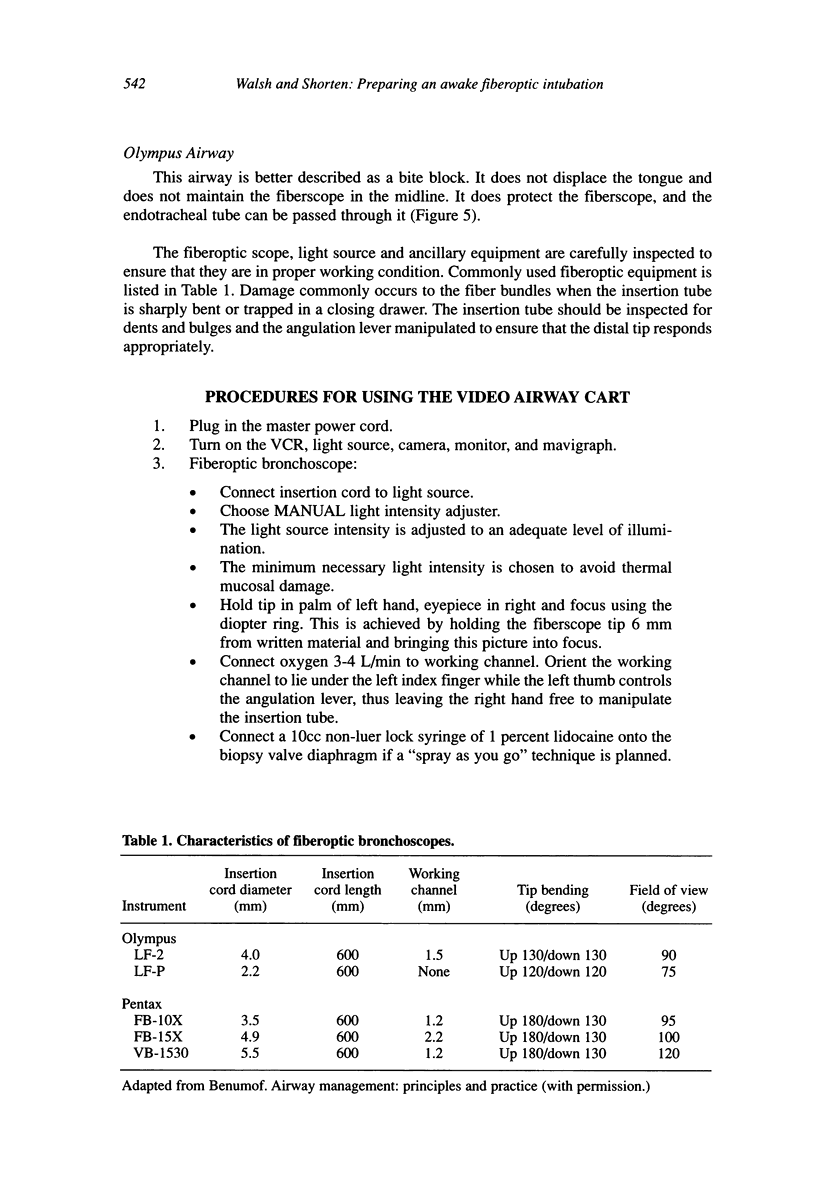
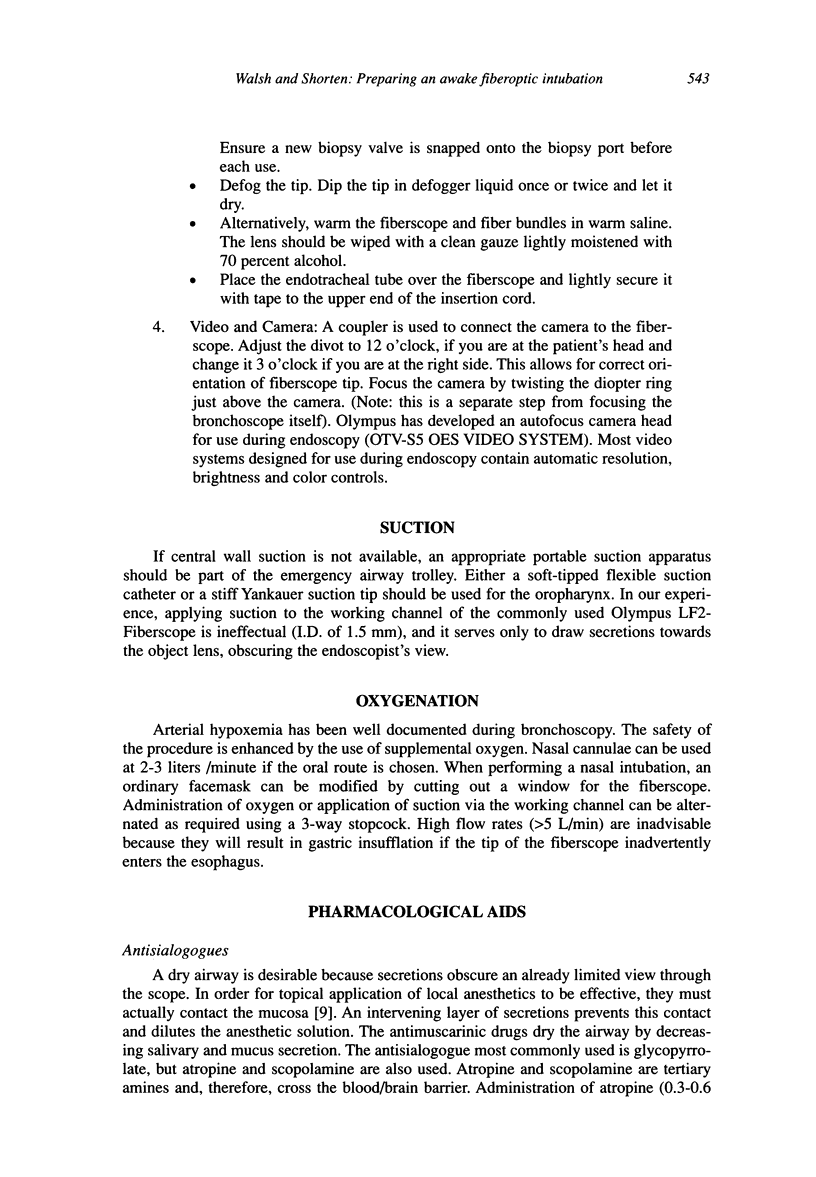
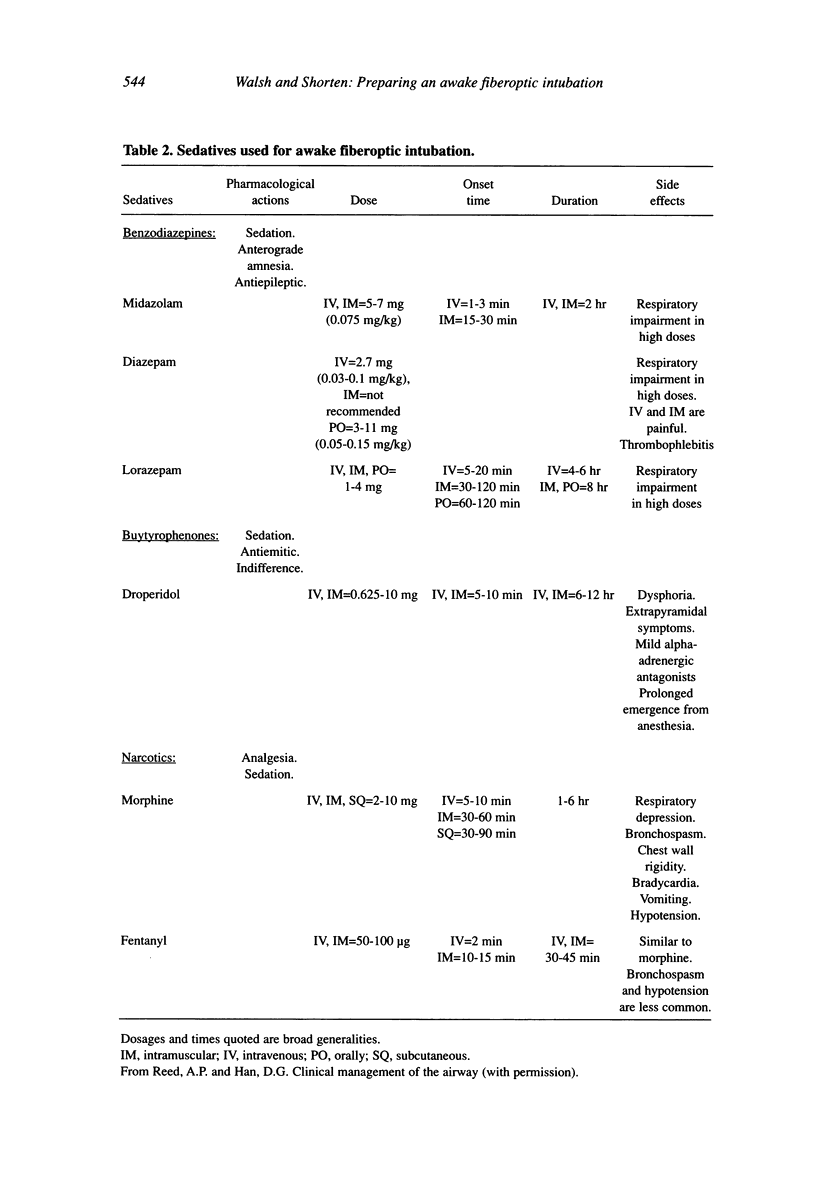
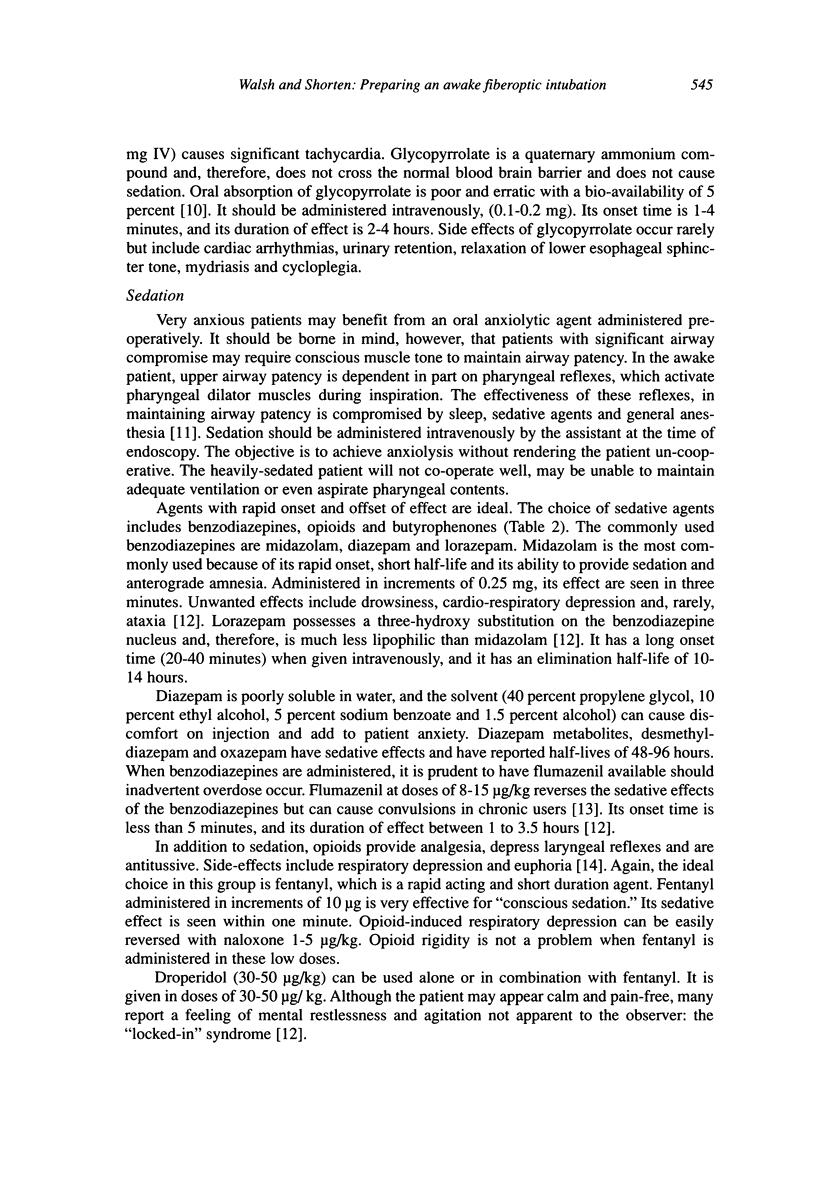
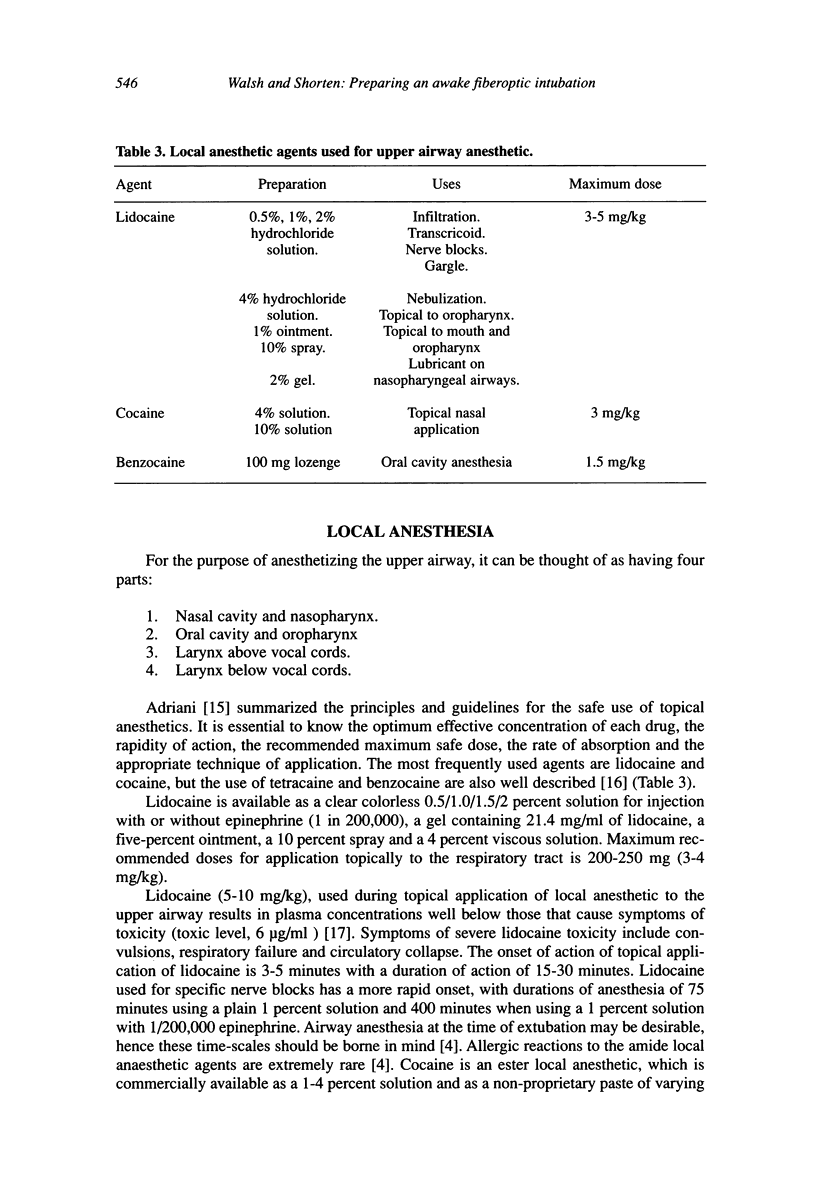
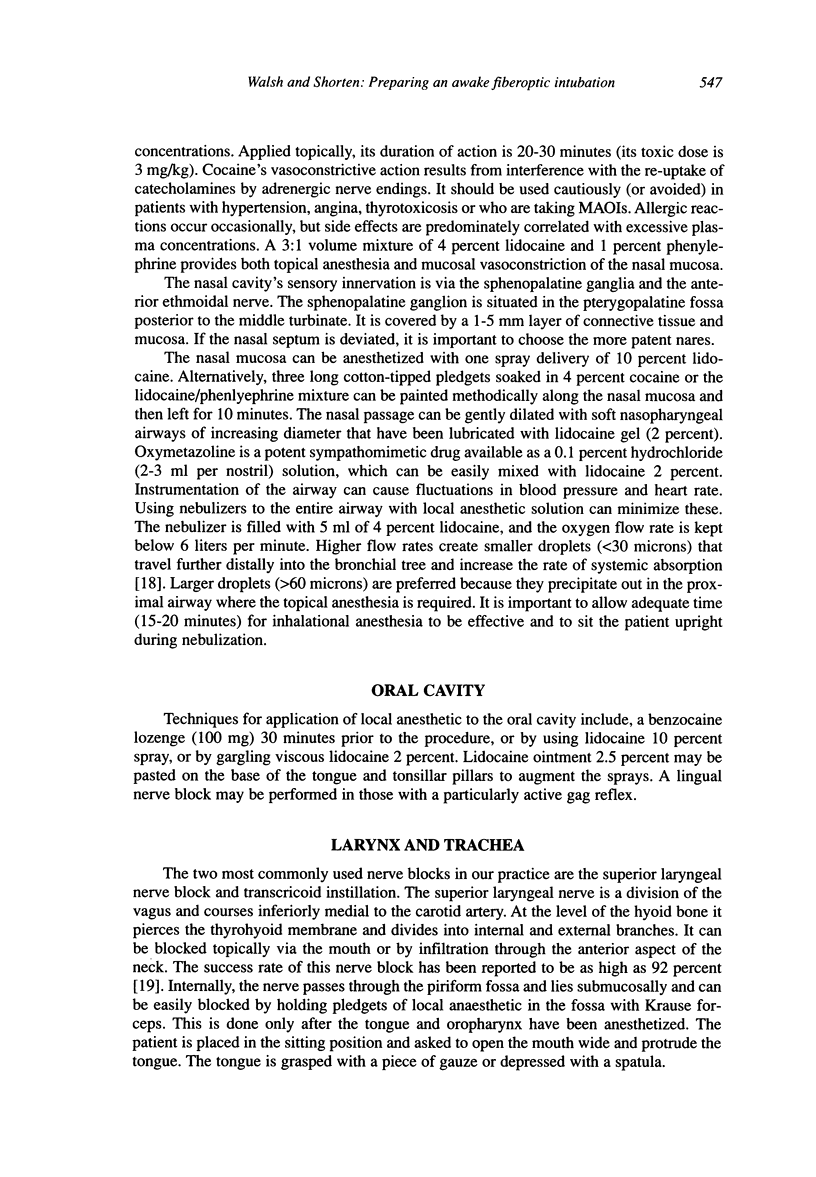
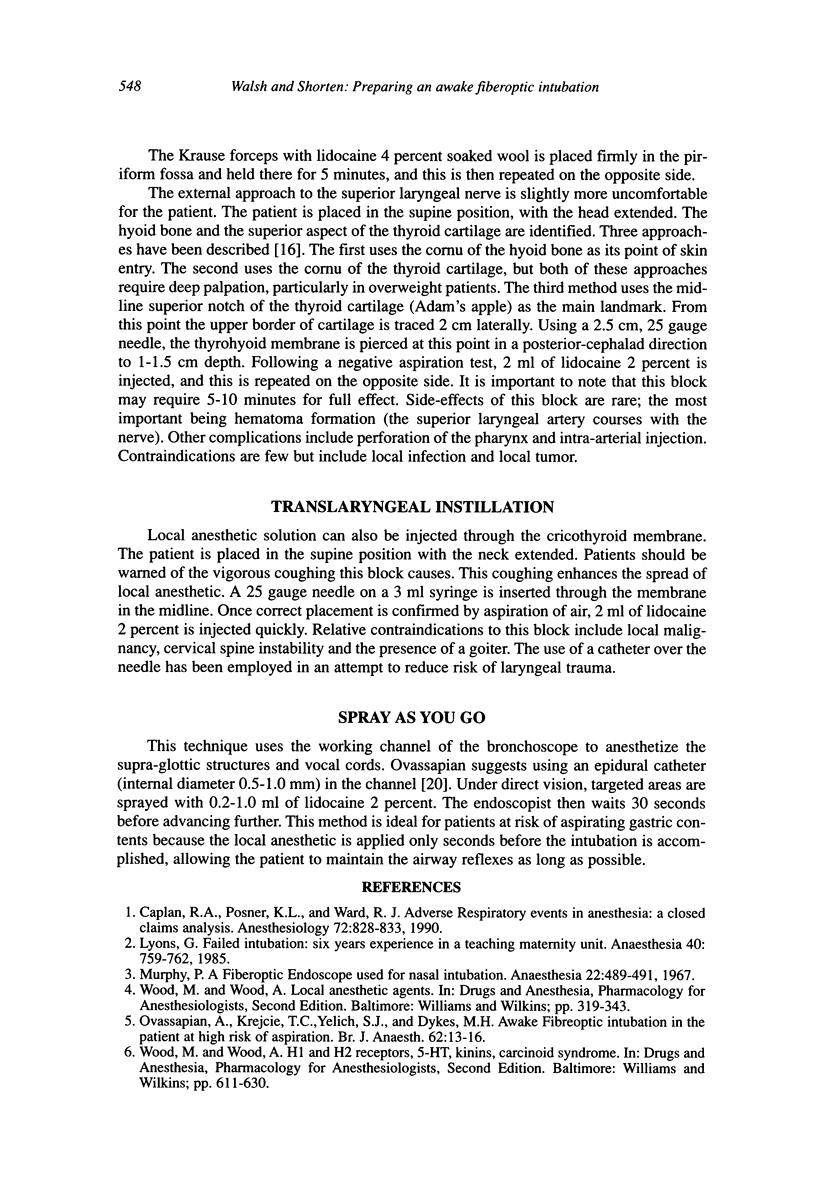
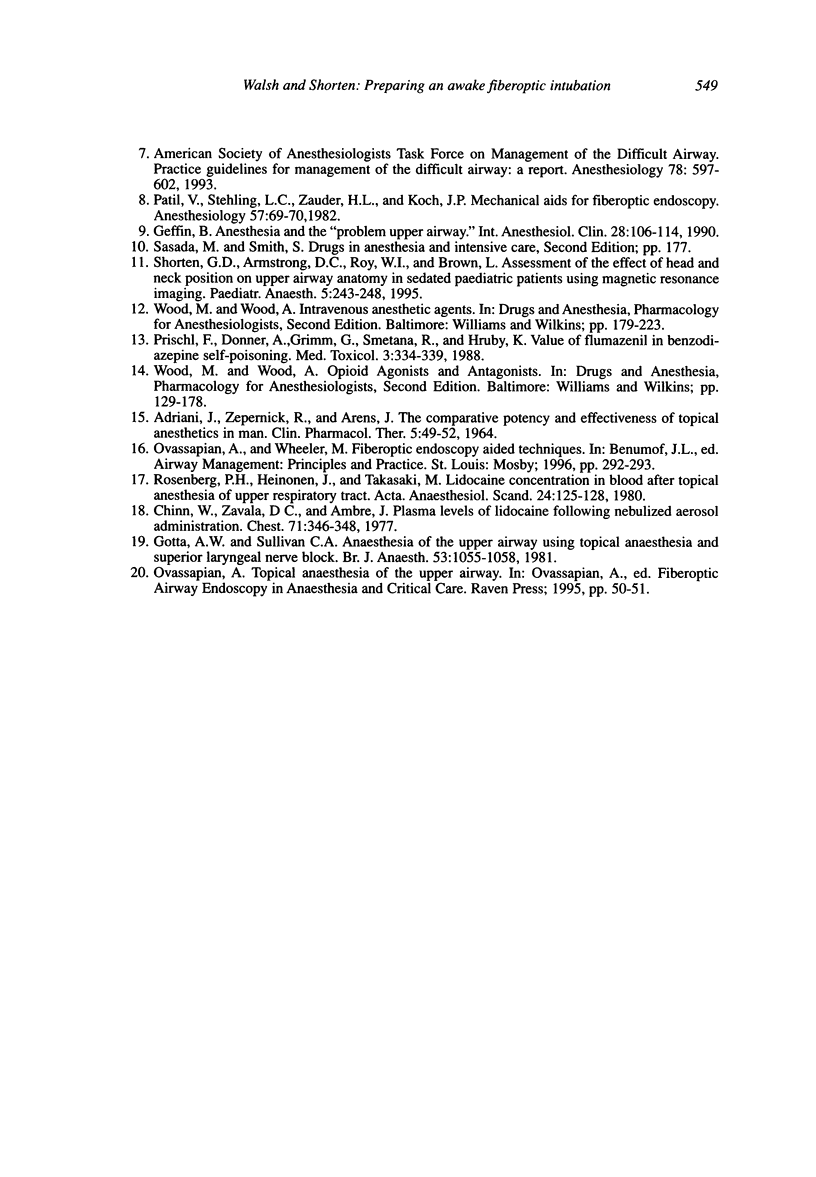
Images in this article
Selected References
These references are in PubMed. This may not be the complete list of references from this article.
- ADRIANI J., ZEPERNICK R., ARENS J., AUTHEMENT E. THE COMPARATIVE POTENCY AND EFFECTIVENESS OF TOPICAL ANESTHETICS IN MAN. Clin Pharmacol Ther. 1964 Jan-Feb;5:49–62. doi: 10.1002/cpt19645149. [DOI] [PubMed] [Google Scholar]
- Caplan R. A., Posner K. L., Ward R. J., Cheney F. W. Adverse respiratory events in anesthesia: a closed claims analysis. Anesthesiology. 1990 May;72(5):828–833. doi: 10.1097/00000542-199005000-00010. [DOI] [PubMed] [Google Scholar]
- Chinn W. M., Zavala D. C., Ambre J. Plasma levels of lidocaine following nebulized aerosol administration. Chest. 1977 Mar;71(3):346–348. doi: 10.1378/chest.71.3.346. [DOI] [PubMed] [Google Scholar]
- Geffin B. Anesthesia and the "problem upper airway". Int Anesthesiol Clin. 1990 Spring;28(2):106–114. doi: 10.1097/00004311-199002820-00007. [DOI] [PubMed] [Google Scholar]
- Gotta A. W., Sullivan C. A. Anaesthesia of the upper airway using topical anaesthetic and superior laryngeal nerve block. Br J Anaesth. 1981 Oct;53(10):1055–1058. doi: 10.1093/bja/53.10.1055. [DOI] [PubMed] [Google Scholar]
- Lyons G. Failed intubation. Six years' experience in a teaching maternity unit. Anaesthesia. 1985 Aug;40(8):759–762. doi: 10.1111/j.1365-2044.1985.tb11000.x. [DOI] [PubMed] [Google Scholar]
- Murphy P. A fibre-optic endoscope used for nasal intubation. Anaesthesia. 1967 Jul;22(3):489–491. doi: 10.1111/j.1365-2044.1967.tb02771.x. [DOI] [PubMed] [Google Scholar]
- Patil V., Stehling L. C., Zauder H. L., Koch J. P. Mechanical aids for fiberoptic endoscopy. Anesthesiology. 1982 Jul;57(1):69–70. doi: 10.1097/00000542-198207000-00028. [DOI] [PubMed] [Google Scholar]
- Practice guidelines for management of the difficult airway. A report by the American Society of Anesthesiologists Task Force on Management of the Difficult Airway. Anesthesiology. 1993 Mar;78(3):597–602. [PubMed] [Google Scholar]
- Rosenberg P. H., Heinonen J., Takasaki M. Lidocaine concentration in blood after topical anaesthesia of the upper respiratory tract. Acta Anaesthesiol Scand. 1980 Apr;24(2):125–128. doi: 10.1111/j.1399-6576.1980.tb01519.x. [DOI] [PubMed] [Google Scholar]
- Shorten G. D., Armstrong D. C., Roy W. I., Brown L. Assessment of the effect of head and neck position on upper airway anatomy in sedated paediatric patients using magnetic resonance imaging. Paediatr Anaesth. 1995;5(4):243–248. doi: 10.1111/j.1460-9592.1995.tb00292.x. [DOI] [PubMed] [Google Scholar]







